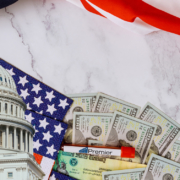2021 Updates to the PPP Program
As most businesses are aware, the rules governing PPP loans have been updated as part of The Economic Aid to Hard-Hit Small Businesses, Nonprofits, and Venues Act (“Act”). The Act was just one section of the massive 2021 Consolidated Appropriations Act that was passed by Congress and signed into law by the President on December 27, 2020. To combat the ongoing disruptions caused by the COVID-19 pandemic, the Act generally provides (a) first time PPP loans for businesses that did not obtain a loan in the first instance, (b) PPP second draw loans for businesses that already obtained a loan but need additional funding, and (c) additional funding for businesses that returned their first PPP loan or did not get the full amount for which they qualified.
While further guidance from the Small Business Administration concerning the Act and implementation of second round PPP loans is expected, here are some of the more noteworthy updates and changes to the PPP loan program:
- Of the $325 billion appropriated under the Act, $284.45 billion has been allocated for PPP second draw loans.
- The PPP second draw loans are intended to target smaller and harder-hit businesses, and the rules for second draw loans are more restrictive to ensure the funds are provided to those businesses with the greatest need. In order to be eligible, the business must:
- Employ no more than 300 employees;
- Have used or will use the full amount of their first PPP loan prior to disbursement of the second draw loan; and
- Be able to demonstrate at least a 25% reduction in gross receipts in the first, second, or third quarter of 2020 relative to the same quarter in 2019.
For businesses that were not in operation in 2019, additional eligibility rules are provided under the Act.
- Loan eligibility expanded for certain nonprofit organizations that do not receive more than 15% of their revenue from lobbying.
- In general, borrowers may receive a loan amount of up to 2.5 times the average monthly payroll costs in either the one-year prior to the second draw loan or calendar year 2019. For restaurants, hotels, and other establishments providing customers with lodging and/or preparing meals, snacks, and beverages for immediate consumption (businesses with NAICS code beginning with 72), the loan amount is 3 times the average monthly payroll costs. Second draw PPP loans are capped at a maximum amount of $2 million.
- In addition to payroll costs, covered mortgage, rent, and utility payments, the Act makes the following additional expenses allowable uses and eligible for forgiveness:
- Covered operations expenditures – payment for any software, cloud computing, and other human resources and accounting needs.
- Covered property damage costs – costs related to property damage due to public disturbances that occurred during 2020 that are not covered by insurance.
- Covered supplier costs – expenditures to a supplier pursuant to a contract, purchase order, or order for goods in effect prior to taking out the loan that are essential to operations at the time at which the expenditure was made.
- Covered worker protection expenditure – personal protective equipment and adaptive investments to help a loan recipient comply with federal health and safety guidelines or any equivalent State and local guidance related to COVID-19 during the period between March 1, 2020, and the end of the national emergency declaration.
- For forgiveness, the 60%/40% cost allocation between payroll and non-payroll will continue to apply. However, PPP borrowers may now include additional group insurance payments as part of their covered “payroll costs.” This includes insurance plans such as vision, dental, disability and life insurance.
- Allows the borrower to elect a “covered period” within which to spend the loan proceeds. The covered period may end at the point of the borrower’s choosing, which can be any length between 8 and 24 weeks after origination of the PPP loan. Recall that first draw PPP loan borrowers had little flexibility and were required to choose either an 8- or 24-week covered period.
- To apply for a second draw loan, the borrower must submit to its lender SBA Form 2483-SD (Paycheck Protection Program Second Draw Borrower Application Form) or the lender’s equivalent form. The documentation required to substantiate payroll cost calculations is generally the same as documentation required for first draw PPP Loans.
- However, no additional payroll cost documentation will be required if the borrower uses 2019 payroll cost documentation consistent with what was presented for its first draw PPP loan, and obtains its second draw loan from the same lender.
- For loan amounts greater than $150,000, the borrower will be required to document the 25% revenue reduction. Documentation may include relevant tax forms, including annual tax forms, or, if relevant tax forms are not available, quarterly financial statements or bank statements.
- The Act simplifies the forgiveness application process for borrowers who have received, or will receive, PPP loans in an amount of $150,000 or less. Here, full forgiveness is available if the borrower submits a certification in a 1-page form to be finalized by the SBA.
Premier Business Lending is working with the SBA in order to secure funding for business owners. Follow the link below and apply online. Once we receive your inquiry a finance consultant will reach out to you immediately to walk you through the next steps. https://premierbusinesslending.com/ppp-contact/


